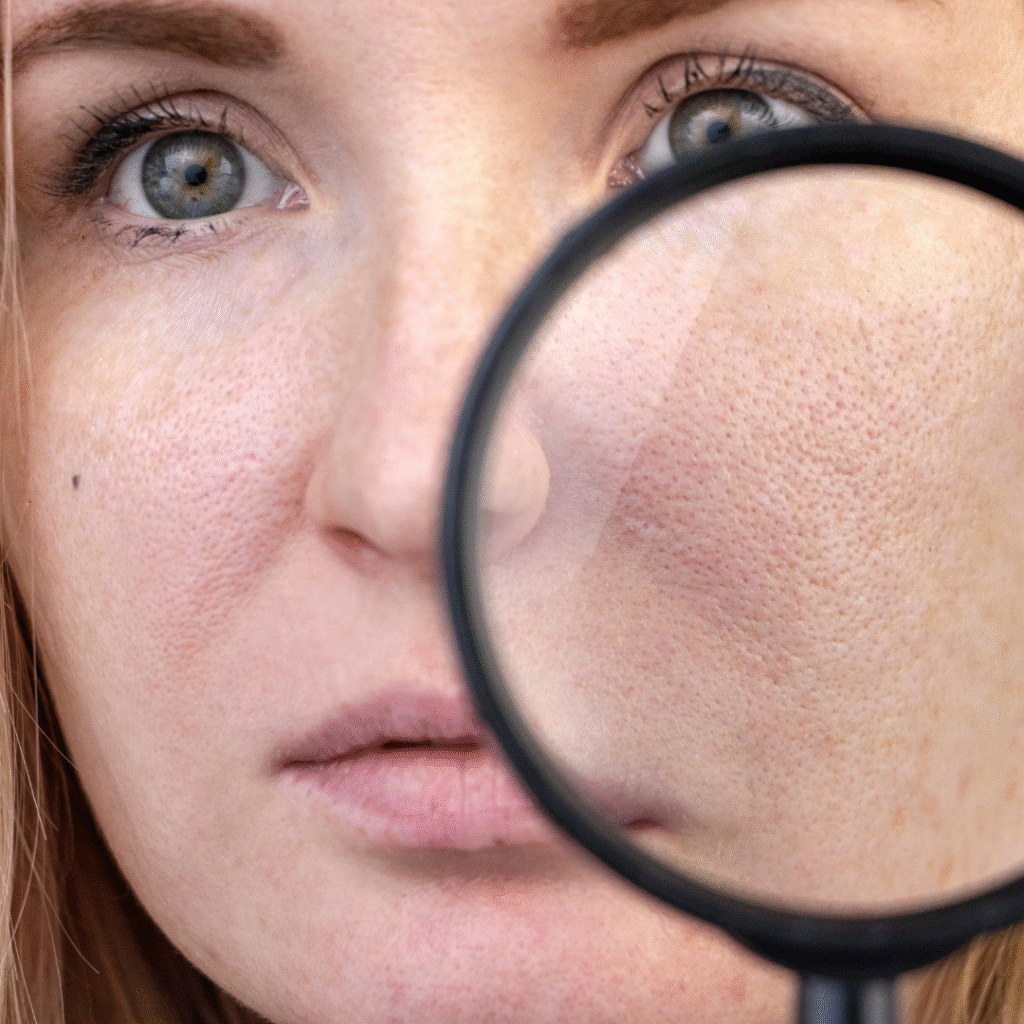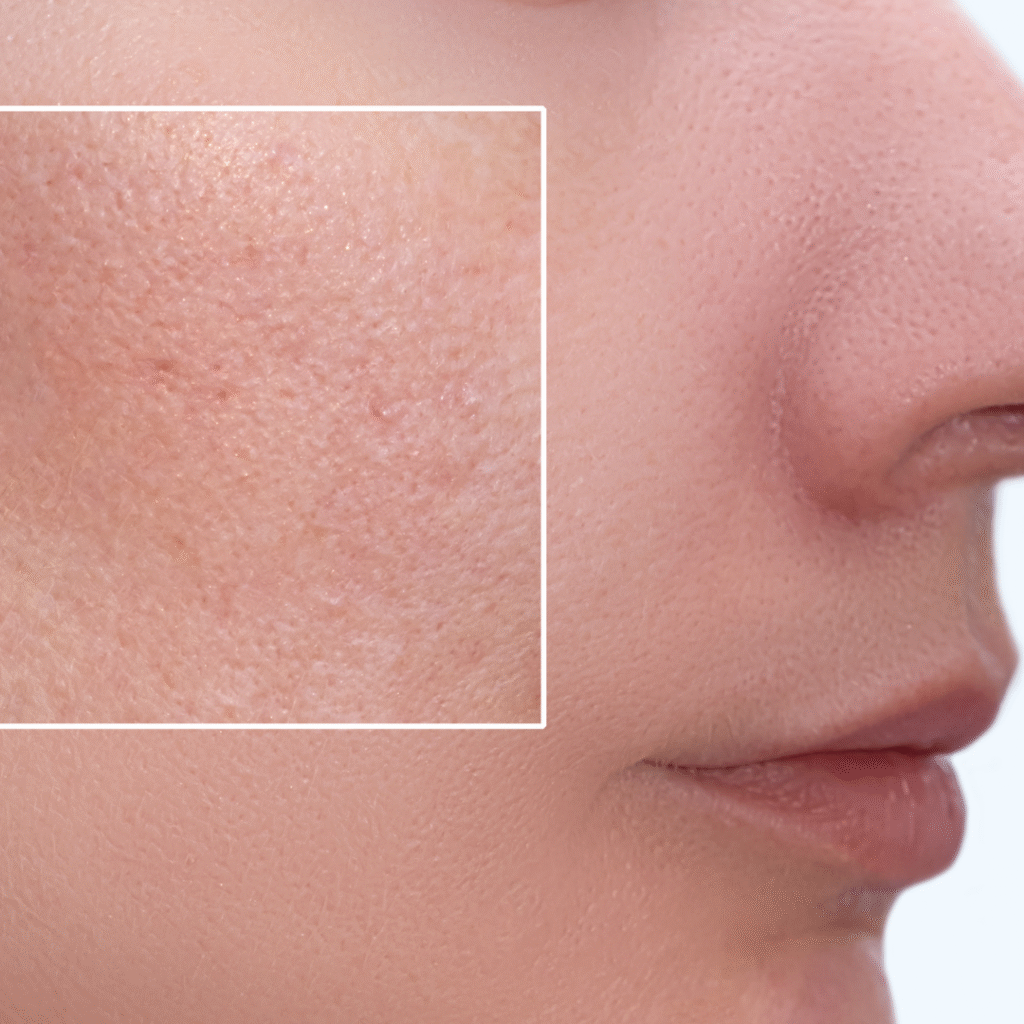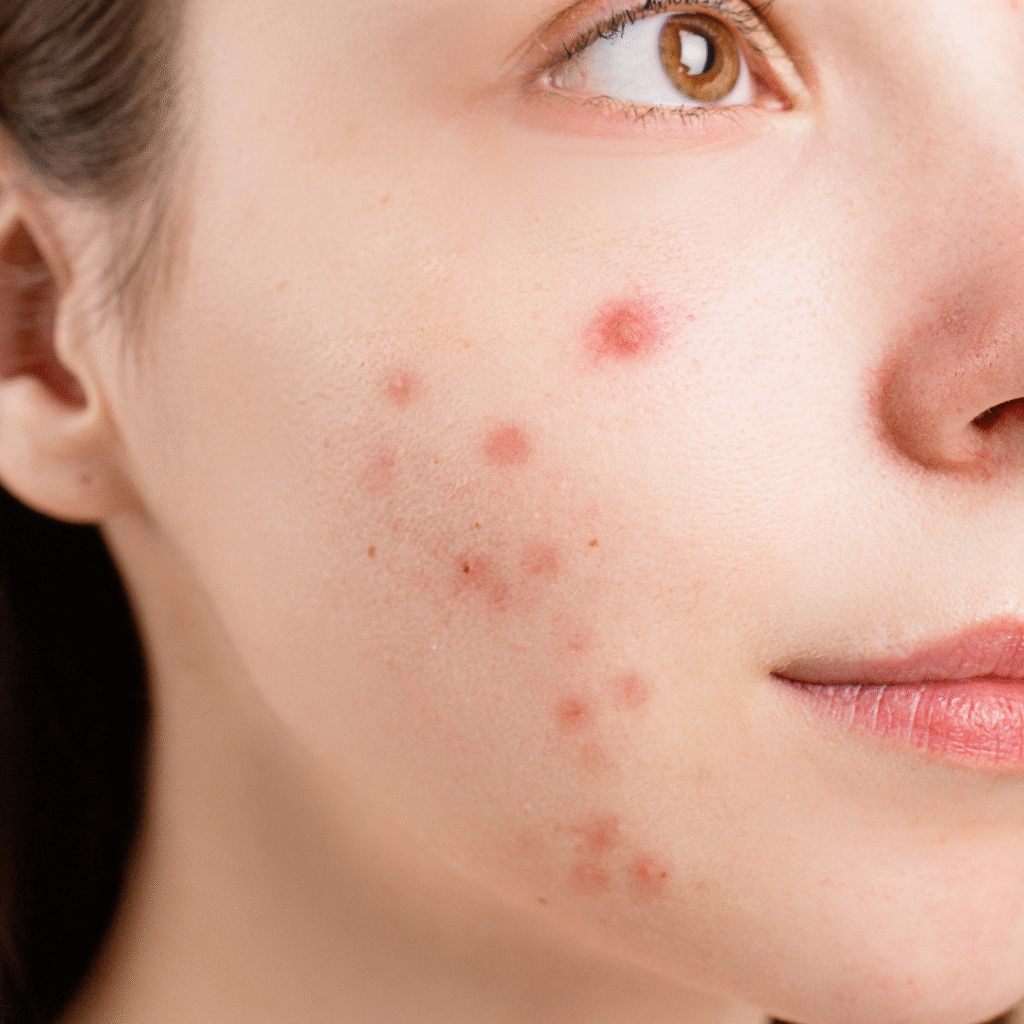
What Are Open Pores? Introduction
The term ‘open pores’ refers to enlarged skin pores that have become more noticeable over time. The pores on the skin allow it to ‘breathe’ by releasing the sebum or natural oil onto the surface. However, large skin pores often appear in areas that have a higher density of sebaceous glands specifically, in the ‘t-zone’ of the face. They adversely affect the skin texture and become an aesthetic concern for both men and women with oily or combination skin types.
The skin concern affects teenagers undergoing hormonal changes and adults with ageing skin or hormonal issues too! After knowing the meaning of open pores, it’s time to find out its causes. Also, explore effective treatments and preventive tips for minimising them, right here!
Symptoms and Causes
Symptoms of Open Pores
Open pores are enlarged skin openings that make the skin look uneven. They are more visible in oily or combination skin types. Common symptoms include:
Large, visible pores on the nose, cheeks, forehead, or chin.
Rough or uneven skin texture that feels bumpy.
Excess oiliness around the T-zone, makes pores look bigger.
Blackheads or whiteheads often appear within enlarged pores.
More noticeable pores with age due to reduced skin elasticity.
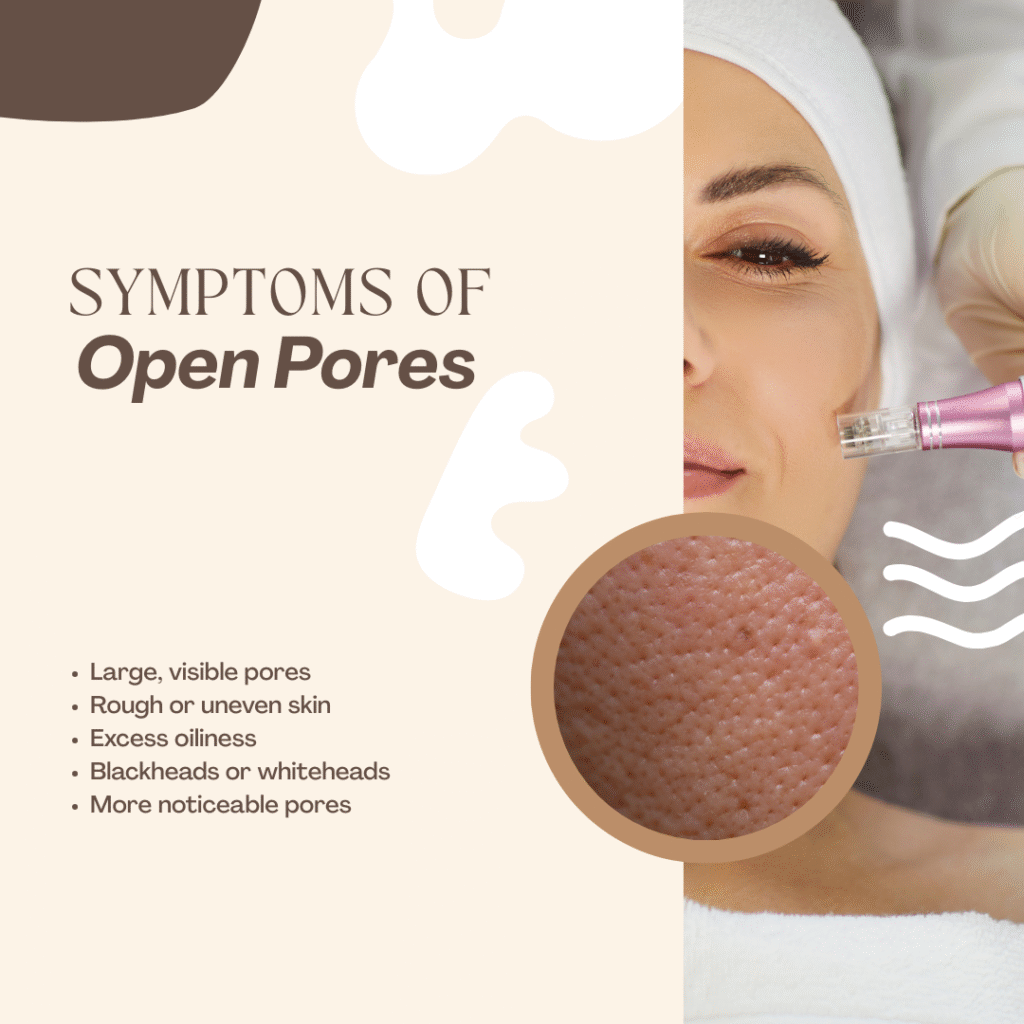
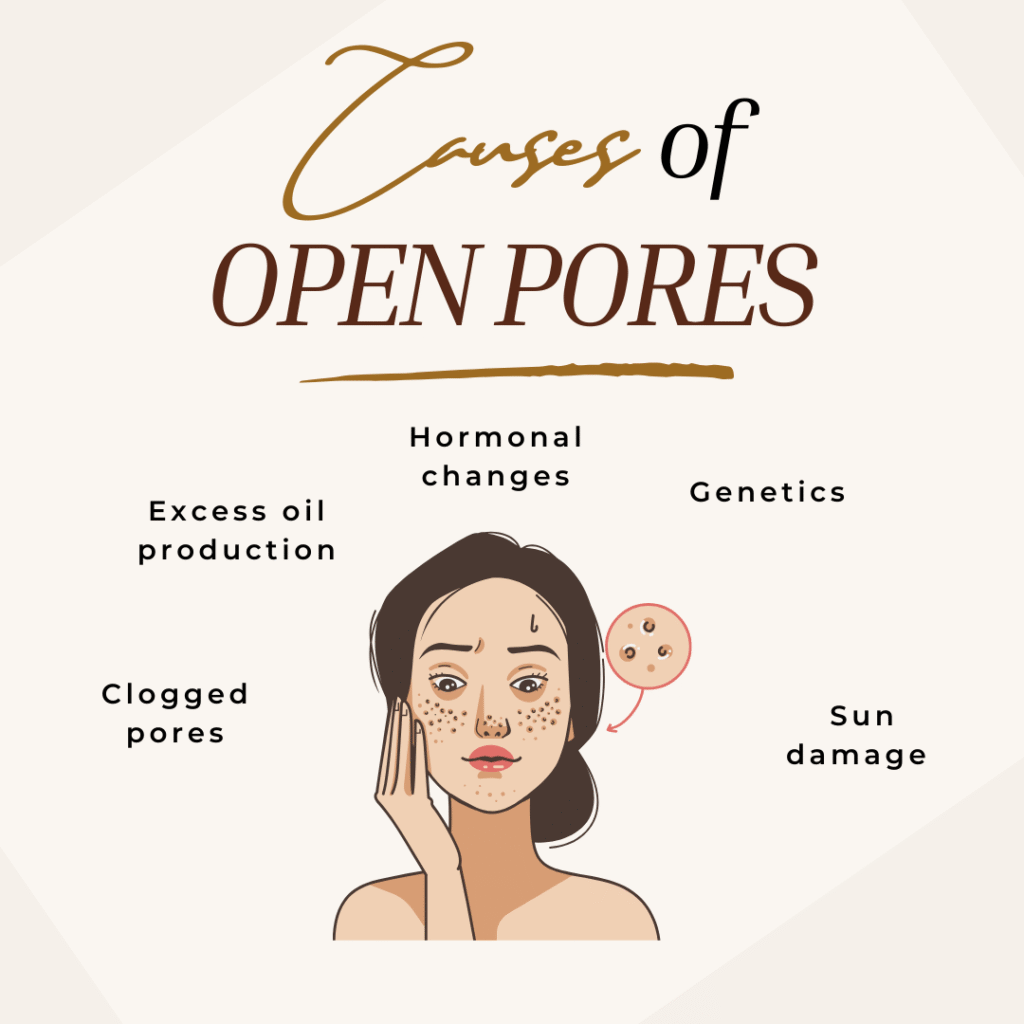
Causes of Open Pores
Open pores appear when the tiny openings of hair follicles become larger and more visible. Several factors can make pores look bigger:
Excess oil production – Oily skin produces too much sebum, stretching the pores.
Genetics – If large pores run in your family, you’re more likely to have them.
Aging – Loss of collagen and skin elasticity with age causes pores to look enlarged.
Sun damage – UV rays thicken the skin and weaken collagen, making pores more noticeable.
Clogged pores – Dirt, oil, and dead skin cells block pores, stretching them further.
Hormonal changes – Puberty, menstrual cycles, or hormonal imbalance can increase oil production and pore size.
Improper skincare – Using heavy creams, sleeping with makeup, or not cleansing properly can worsen pore visibility.
Types of Open Pores
Open pores are classified based on their shape and appearance. The main types include:
O-shaped Pores
Usually round and enlarged.
Common in people with oily skin.
Often caused by excess sebum production and genetics.
U-shaped Pores
Appear wider and more irregular.
Linked to aging and loss of skin elasticity.
Sun damage and collagen breakdown make them more visible.
Y-shaped (or Ice-pick) Pores
Look deeper and resemble small pits.
Often linked to past acne or scarring.
Harder to treat and may need advanced dermatological procedures.
Common Causes Of Acne Vulgaris
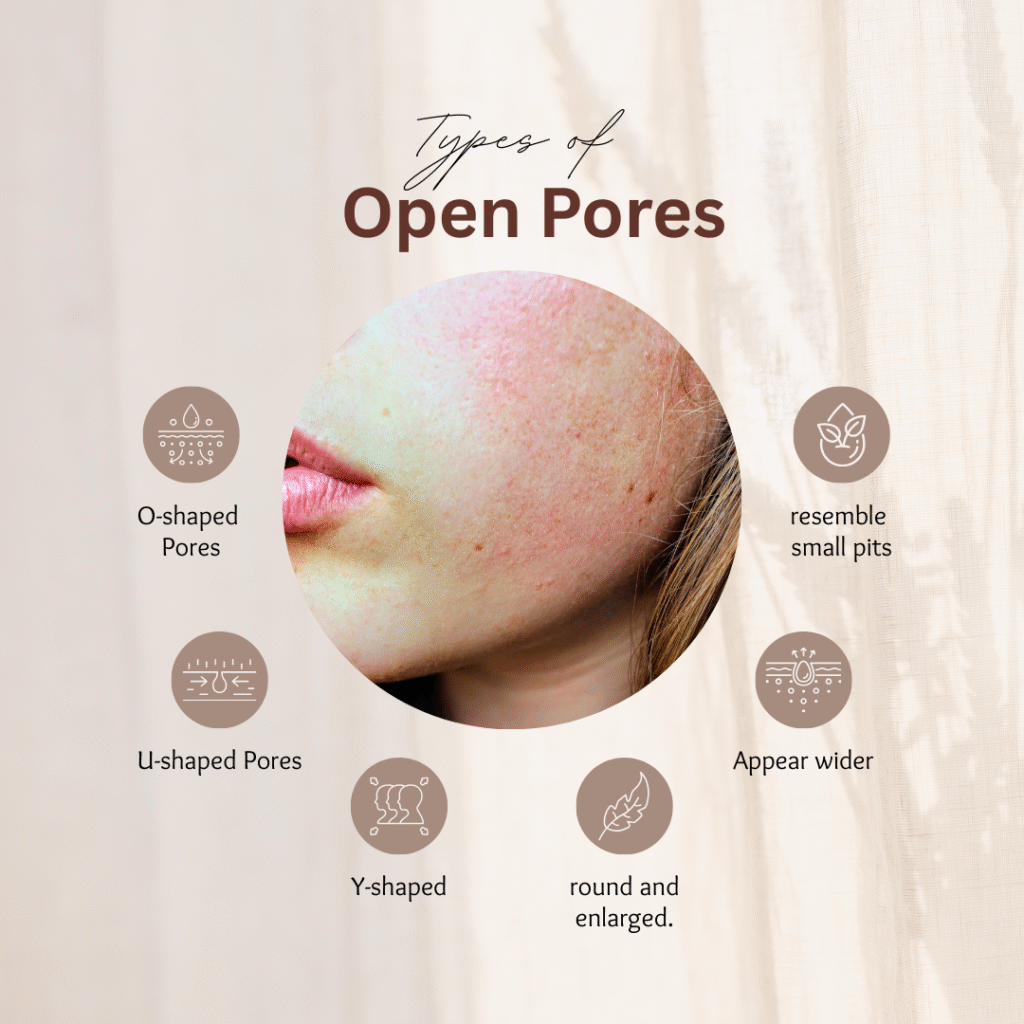
Treatment Options
Managing open pores requires a mix of proper skincare and professional treatments, depending on their type and severity.
Topical Treatments
Advanced Dermatology Procedures
Skincare & Home Remedies
Consult a Specialist Today
Many of the techniques for preventing pimples may also be used to cure them. Eating well, avoiding stress, and not popping pimples may help manage zits and reduce their length. If your acne continues despite your best efforts, you may need prescription acne treatment. Consult your dermatologist if you’re uncertain about treatment.
FAQ's
Open pores are enlarged skin openings that release oil and sweat. They often look more visible on oily and aging skin.
Excess oil production, sun damage, aging, hormonal changes, genetics, and past acne are common reasons behind enlarged pores.
No, open pores cannot be closed completely. However, treatments like retinoids, chemical peels, and laser therapy can reduce their appearance.
Dermatological options like chemical peels, microneedling, and laser treatments are the most effective for visibly reducing large pores.
Follow a good skincare routine, use sunscreen daily, avoid heavy creams, keep your skin clean, and maintain a healthy diet.
How To Diagnose Open Pores?
A dermatologist will first perform a physical examination of the affected area. He or she will determine the severity of the condition based on the following criteria:
- Size of the pores
- Location of the pores
- Severity of the condition
- Size of the affected area
Post-evaluation, the dermatologist will note your family and medical history, hormonal health and lifestyle habits to identify the underlying cause of the concern. Based on his assessment of your skin type, the severity of the condition and the underlying cause, he will recommend a customised treatment plan for reducing your open pores visibly.
Risk of Open Pores
If along with large pores on your face, you experience skin infections or acne, you should consult a dermatologist immediately. Keep in mind that large skin pores are benign, cause no pigmentation, and do not cause other skin afflictions. They are not a serious medical concern.
However, seek medical help if you note a significant increase in pore size, distribution or density. Your dermatologist can treat the condition effectively to improve your skin texture.
Self-Care
Though it is the first line of action for most people, open pores treatment at home is a bad idea. Avoid using any OTC products like creams, serums and toners for reducing open pores as they will give you temporary results at best. Unsupervised use of medicated ointments may cause a severe side-effect. Experimenting with home remedies for open pores that have unproven safety and efficacy may cause an allergic reaction and worsen your skin condition. It is best to consult a dermatologist for recommending any skin-care products or aesthetic procedures based on your skin type, cause and condition.
Enlarged pores are challenging to treat as they may be a result of various underlying factors. Leading dermatologists at Urban Skin & Hair Clinic combine medical treatments for open pores with advanced aesthetic procedures to give you visible results. They focus on treating primary triggers by controlling excessive sebum production and minimising skin damage due to ageing.
Our medical expert at Urban Skin Care Clinic may suggest the following modalities as standalone or combination treatment to give you the best results:
Topical Therapies: Many qualified skin experts recommend the use of topical applications like Tretinoin, topical nicotinamide, Vitamin C, or AHAs to diminish open pores. They also advise the dosage and direction for use to ensure visible improvement in your skin texture.
Oral Medications: The medical experts at urban skin care have a holistic approach. They may prescribe oral medicines such as oral retinoids (Isotretinoin), antiandrogens (spironolactone) and oral contraceptives to treat any hormonal cause of enlarged pores. You must follow the instructions related to the drug intake strictly to get the best results without any side-effects.
Laser Toning: Top doctors at urban skin care specialise in performing advanced laser treatment for open pores using USFDA-approved technology. They use Q-Switched YAG and fractionated erbium YAG laser to boost the collagen production in the skin and minimise the appearance of open pores effectively. A 2011 study revealed that Q-switched lasers visibly reduce open pores when used along with photo-activated topical solutions.
Fractional Micro-Needling Radiofrequency (MNRF): Experienced dermatologists at urban skin care may use tiny micro-needles to release radiofrequency energy in the deeper layers of the skin. It stimulates collagen and elastin production and thereby results in the decreased visibility of enlarged pores.
Chemical Peels: The medical team at Urban Skin & Hair Clinic recommends the application of salicylic acid peels and glycolic acid peels for the controlled exfoliation of the dead cells. It helps control excess sebum production and aids skin renewal. It is an effective treatment for reducing large skin pores.
Comedone Extraction: Our skin experts may use specialised tools to extricate open comedones (blackheads) and closed comedones (whiteheads). The procedure helps prevent clogging and subsequent widening of pores.
Prevention Open Pores?
If you are wondering how to close the open pores on your face; you can do your bit by keeping the skin clean and sun-safe. Here are some simple skin-care tips you can follow to prevent the open pores from becoming prominent:
Clean: Use a gentle, gel-based, non-comedogenic cleanser twice daily to unclog pores.
Protect: Apply a broad-spectrum, water-resistant sunscreen with SPF 30+ every day to prevent premature skin ageing due to sun damage.
Nourish: Use water-based moisturisers suitable for oily/combination skin. You may also ask your skin specialist to recommend any collagen-boosting products, such as retinol.
However, if you feel the above tips are not giving you the desired results, it’s advisable to explore advanced solutions.
Prognosis
Please remember, no treatment can remove pores from your face completely or permanently. However, advanced dermatological procedures can reduce the appearance of enlarged pores and give you a smoother and more radiant skin texture than before.
If open pores are drawing all your attention of late, consult a dermatologist at Urban Skin & Hair Clinic today to find a suitable treatment option that can restore your smooth and flawless skin!




